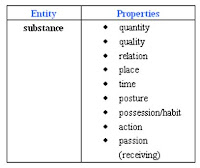(यथा पूर्वमेव, तथेहापि मुख्यतयाङ्ग्लभाषानुवादतः सुदीप्तमुन्सीत्यनेन सुरगिराऽनूदितः।
मतिमान्द्येन यद्यत्र मे भ्रमो भासते कोऽपि ।
संशोध्यतां विपश्चिद्भिरनन्तगुणसम्पन्नैः ॥
इत्यस्ति प्रार्थनाऽनुवादकस्य ।
मया तु कन्तमहोदयलिखितं जर्मानभाषात्मकं मूलग्रन्थमवलम्ब्य संशोधितम् ।
पूर्वव्यवहृतस्याङ्ग्लभाषानुवादस्य दोषबाहुल्यादिदानीं तत्परित्यज्य Paul Guyer-महोदयानूदितसंस्करणस्यानुसरणामत्र क्रियते ।)
व्यर्थं ह्युदासीनतापोषणमेवं जिज्ञासाः प्रति, यासां विषये पुरुषाः स्वत एवोदासीना भवितुं नार्हन्ति । अपि च स्वदार्शनिकवाग्व्यवहारं लोकप्रियशैल्या परिवर्त्य एते स्वघोषिता उदासीनतावादिन, यावदेव मन्यन्ते ते, तावदेव तदवज्ञाताधितात्त्विकोद्घोषेषु पुनरेवानिवार्यरूपेण निपतन्ति । तथापि येषां वैज्ञानिकश्रेष्ठानां ज्ञानफलानि (तत्प्राप्तिसम्भवे सति) वयमवज्ञातुं न शक्नुमस्तेषां मध्ये एवोभूतेयमुदासीनता । तेन सास्माकं सम्यङ्मननयोग्या । न खल्वेषाऽस्मत्कालीयमननशैथिल्यादुद्भूता किन्त्वाभासज्ञानेनानिवारणयोग्यैतत्कालीयप्रौढविचारणशक्तिजा । एतदुदासीनताद्वारेण विचारणशक्तिः स्वीयकार्याणां श्रमसाध्यं स्वज्ञानरूपं कार्यं पुनरेव साधयितुं तथा स्वीयनित्यन्यायानुसारेण, न तु बलतः, सकलनिर्मूलकाभ्युपगमभाननिराकरणाय स्वीयन्याय्यप्रार्थनासंरक्षणाय व्यवहारासनं स्थापयितुञ्च विनियुक्ता भवति ।
(प्रथमसंस्करणस्य मुखबन्धे, Paul Guyer-महोदयस्यानुवादे १०० पृष्टे एतदांग्लानुवादात्मकमूलं वर्तते)
एतद्ग्रन्थानुवादीयपूर्वभाग इह विद्यते ।
मतिमान्द्येन यद्यत्र मे भ्रमो भासते कोऽपि ।
संशोध्यतां विपश्चिद्भिरनन्तगुणसम्पन्नैः ॥
इत्यस्ति प्रार्थनाऽनुवादकस्य ।
मया तु कन्तमहोदयलिखितं जर्मानभाषात्मकं मूलग्रन्थमवलम्ब्य संशोधितम् ।
पूर्वव्यवहृतस्याङ्ग्लभाषानुवादस्य दोषबाहुल्यादिदानीं तत्परित्यज्य Paul Guyer-महोदयानूदितसंस्करणस्यानुसरणामत्र क्रियते ।)
व्यर्थं ह्युदासीनतापोषणमेवं जिज्ञासाः प्रति, यासां विषये पुरुषाः स्वत एवोदासीना भवितुं नार्हन्ति । अपि च स्वदार्शनिकवाग्व्यवहारं लोकप्रियशैल्या परिवर्त्य एते स्वघोषिता उदासीनतावादिन, यावदेव मन्यन्ते ते, तावदेव तदवज्ञाताधितात्त्विकोद्घोषेषु पुनरेवानिवार्यरूपेण निपतन्ति । तथापि येषां वैज्ञानिकश्रेष्ठानां ज्ञानफलानि (तत्प्राप्तिसम्भवे सति) वयमवज्ञातुं न शक्नुमस्तेषां मध्ये एवोभूतेयमुदासीनता । तेन सास्माकं सम्यङ्मननयोग्या । न खल्वेषाऽस्मत्कालीयमननशैथिल्यादुद्भूता किन्त्वाभासज्ञानेनानिवारणयोग्यैतत्कालीयप्रौढविचारणशक्तिजा । एतदुदासीनताद्वारेण विचारणशक्तिः स्वीयकार्याणां श्रमसाध्यं स्वज्ञानरूपं कार्यं पुनरेव साधयितुं तथा स्वीयनित्यन्यायानुसारेण, न तु बलतः, सकलनिर्मूलकाभ्युपगमभाननिराकरणाय स्वीयन्याय्यप्रार्थनासंरक्षणाय व्यवहारासनं स्थापयितुञ्च विनियुक्ता भवति ।
(प्रथमसंस्करणस्य मुखबन्धे, Paul Guyer-महोदयस्यानुवादे १०० पृष्टे एतदांग्लानुवादात्मकमूलं वर्तते)
एतद्ग्रन्थानुवादीयपूर्वभाग इह विद्यते ।





